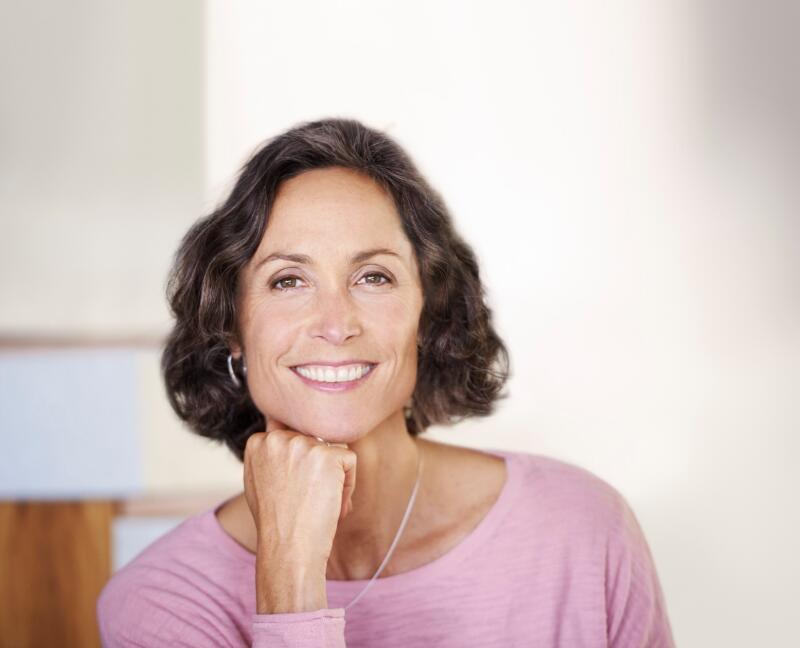-
Your concerns
Our articles to help you gain a better understanding
-
Our solutions
-
Ducray Dermatological laboratories

Hair ages just like skin does. Over time, it becomes white, thin and more fragile. The hair type changes. So, when faced with hair aging, what should you do? Find out what you need to know in order to live better each day.
After many years of research, our laboratories have proven that, just like with our skin, time also takes its toll on our hair. We're talking about hair aging, a phenomenon that is different to hair loss and that begins with the appearance of white and graying hair. In scientific terms, it is referred to as canities. It is a completely natural, irreversible process associated with age. It affects both men and women, some sooner than others, and occurs with varying intensity. When melanocytes, the cells located at the hair root (hair follicle) that are responsible for hair pigmentation, run out of melanin (pigment), the hair begins growing white.
Standing in front of the mirror, you struggle to accept the whiteness in your hair, which is the first sign of theaging of hair. And what if, by trying to accept this change, you become a supporter of it?
Great news - having white hair at any age is now in style. It doesn't require maintenance and is seen as being fashionable, namely thanks to certain individuals. With her book, "Une apparition", journalist Sophie Fontanel started a real debate on this subject. The same can be said for Tatiana de Rosnay or Iris Apfel. For men, George Clooney and “Mc Dreamy” from Grey's Anatomy have single-handedly succeeded in making salt and pepper hair attractive. But whilst some show off their white hair with pride, this is not the case for everyone.
Are you (still) not ready to accept this change in hair color? Maybe it's time to go to a hair salon for a tone-on-tone coloring treatment, or for some highlights, which your white hairs will blend into. And so as not to add to the damage and make the aging of hair worse, you can also turn to plant-based or gentler dyes, for example those that are ammonia-free.
The hair aging process is not just the whitening of hair. As hair ages, cell regeneration also becomes slower. Hair receives fewer nutrients (vitamins and trace elements) than before. This has a direct impact on hair growth, which slows down and is also of lesser quality. The hair loses density because its diameter decreases and the hair that does grow becomes increasingly thin.
What can you do specifically when faced with hair aging? What are some small, daily actions that can change the situation? As hair ages, it becomes drier, duller, thinner and, on the whole, more fragile. It is therefore essential to adapt your beauty routine to the new challenges faced by your hair.
If you regularly color your roots and lengths to hide white hair, it is vital that you maintain your colored hair by using a range of tailored products to preserve color and protect hair. Colored hair is more sensitive. It needs to be pampered with hydrating and moisturizing products in order to preserve the color.
Not coloring your hair is not a reason to not maintain thin hair which has lost volume due to aging. With this in mind, use specially designed products on your hair in order to tackle this problem. The combined action of a redensifying shampoo, an antioxidant hair serum, and an adapted food supplement will be particularly effective in reinvigorating the hair fiber, both inside and outside, as well as adding bounce and thickness.
If you're trying to find out how to deal with hair aging, you will quickly come to realize that your lifestyle is just as important as everything else.
To correct the deficiencies that can cause this process in your hair (remember, it receives fewer vitamins and nutrients), it is important to have a healthy and balanced diet.
Each day when you're in the bathroom, be gentle with your hair, which is thinning, and becoming dry, brittle and more easily damaged.